Overcoming the scourge of the UAV world
Flyaway! This little word strikes fear in the heart of the drone operator. When you crash, there are usually parts that can be salvaged to rebuild. But with a real “gone back to China,” never-ever found again flyaway, you are left with nothing—not even the knowledge of what went wrong.
What is a flyaway?
A flyaway doesn’t necessarily mean that your aircraft is never retrieved. The FAA defines a flyaway as “an interruption or loss of the control link, or when the pilot is unable to effect control of the aircraft and, as a result, the UAV is not operating in a predictable or planned manner.” A loss of the control link doesn’t always qualify as a flyaway if the flight controller manages to return and land the UAV safely.
I set out to find how to prevent flyaways or, if the worst happens, how to react to one. Unfortunately, most accounts on the Internet are brief and, often, the pilot will cast blame on the multirotor manufacturer without any further introspection. In some cases, I even suspect that people are posting fake flyaway videos to get YouTube views.
There is nothing fake, however, about the video that CineChopper president and pilot Chris Newman posted after his ordeal. He recalls how he reacted when he lost control of his $15,000 flying camera, 100 feet over the Amazon rainforest, while shooting a video for Animal Planet. “It was super intense. Your mind kind of locks up. You can’t comprehend what is going on, because of the shock.”
Newman still had throttle control over his coaxial octocopter, but nothing else. He didn’t trust the return-to-home feature, because the dense foliage forced him to take off with poor GPS coverage. He also hesitated to bring down the aircraft, for fear of crashing into the trees. With hindsight, he admits that was a mistake. “I started running towards it, to get underneath it as much as possible and bring it down, but for some reason it kept moving away from me.” Eventually, Newman performed a crash landing. Fortunately, he managed to recover his aircraft and the damage was minimal.
Throughout the incident, Newman believed the problem was being caused by the GPS when, in fact, he discovered the next day that it was simply his right control stick that was defective.
His story illustrates the challenges of preventing and reacting to a flyaways. Even when you’re careful, sometimes things break.
Learning from other people’s mistakes
While doing my research for this article, I spent several hours scouring the Internet for first-hand testimony. It soon became obvious that there was very little reliable knowledge online. It doesn’t help that many pilots are ashamed of admitting failure.
“An accident where nobody gets hurt is a success. That’s the way you have to look at it. It’s a way of learning.” That’s what Jean Laroche says. He’s the Director of Research and Development for the Quebec Center of Aeronautic Training in Chicoutimi. He has developed a “threat and error assessment” class specifically for UAV pilots. He believes in learning from other people’s mistakes and that pilot inexperience always plays at least a small role in every crash.
Every UAV should have a good failsafe in the event of a loss of link. A failsafe starts in the receiver. When the receiver loses contact with the transmitter, it sends an instruction to the flight controller that tells it to take a predetermined set of actions. This can also be triggered manually with a switch on your radio-control. Most of the time, the UAV then flies back, in a straight line, to its takeoff point and lands.
This is great if the transmitter or control link is at fault. But like any automated system, your aircraft has to work perfectly. If the compass is misbehaving, for example, then it can be disastrous. It also needs a clear path, devoid of obstacles, otherwise it will crash itself. That’s why you should always try to recover in manual mode before resorting to this form of automation.
Pilot error: the usual suspect
Blaming the machine is easy, but sometimes we just screw up! Every pilot should practice piloting his multirotor without GPS assistance. Loss of orientation awareness (not knowing which way the front of the craft is pointing) can be a killer. It’s an easy mistake for a beginner to unintentionally fly his own aircraft away when he thinks he’s trying to fly it back—especially if panic sets in. It’s also possible to accidentally toggle a switch on the controller and unintentionally shift to a different control mode, like home-lock.
Poor judgment of weather conditions can also be a factor. Wind conditions on the ground may vary considerably from the ones at altitude. An aircraft in GPS mode will fight the gusts and may give the impression that everything is fine, until you reach the breaking point. Fly without GPS to find out how hard the wind is actually pushing your aircraft.
Mistakes can also happen before takeoff. In fact, Laroche recalls one such incident that happened while flying over a frozen lake. “It was my sixth flight that day. The aircraft suddenly took off at high velocity.” It crashed before he could do anything. “I hadn’t done my pre-flight checkup like I should,” he confessed. If he had, he would have noticed that his GPS had a loose connector. It came off and his aircraft went crazy.
Many UAV pilots and hobbyists build their own aircraft and Laroche warns this may also increase the risk of hardware failure. An incompatible part, an uncalibrated speed control, IMU or compass, an unbalanced propeller or loose components may all lead to failure.
Break the GPS addiction
There are several ways your GPS can betray you. Laroche believes overreliance on automation is a contributing factor to many flyaways. “The most frequent cause of flyaway is taking off without proper GPS lock and then triggering a return-to-home,” says Laroche. “All critical phases should have as low a level of automation as possible.” In fact, he recommends doing all takeoffs and landings with the GPS turned off.
The GPS pod on most multirotors contains a magnetic compass and, if it fails, an aircraft flying in GPS mode may lose its bearing. The common mistake is taking off from a large ferromagnetic surface, like a manhole cover or the roof of a car, which may confuse the compass.
Even more mundane: the GPS pod can fall off for various reasons (poor construction, bad adhesive, cold weather, accident, etc.). If the GPS and compass don’t stay put, it can cause guidance failure.
There is also a phenomenon called “GPS multipath” that can confuse your aircraft when the signal from the GPS satellite bounces off a building before reaching your aircraft, just like an echo. This may happen when flying between tall buildings … just one more reason to avoid flying in urban areas.
The severity of a defective GPS/compass incident may vary depending on the quality of the flight controller. The aircraft may fly off in a random direction, or it may just switch itself to manual mode. Cheap electronics and software may therefore increase flyaway risk.
In some cases, it may be wise to set the failsafe to simply land, instead of returning home.
Defective or buggy firmware can also cause a flyaway. Beware of any new product that just came out. Remember: it may look good in the advertising, but that doesn’t mean that it will always work flawlessly in real life.
WIFI INTERFERENCE IN UNEXPECTED PLACES
As a last resort, blame interference
Interference can happen, but it’s not as big an issue as some people may believe. “It’s rare nowadays to have a radio that can get jammed or hacked [by interference] in everyday life, because radio-control systems are coded,” explains Sébastien Gravit, technical manager for Dronexperts. If there is a loss of control link, it’s usually a defective failsafe or lack thereof that causes the flyaway. “Only experts could [intentionally] jam communication between a drone and its controller,” says Gravit.
Most RC transmitters broadcast on the 2.4GHz band, which is the same as household WiFi, residential wireless phones, baby monitors, wireless cameras, remote car starters and even microwave ovens. All these sources of interference are mostly found indoors and shouldn’t affect your aircraft.
High-voltage power lines also generate electromagnetic interference. However, the aircraft would have to be flown right next to the power line for that to be an issue, which is something you shouldn’t do in any case.
What you need to watch out for are sources which may increase the ambient level of electromagnetic noise, which could drown your signal and cause an interruption of the control link. Make sure you know your transmitter’s maximum range and remember that the farther out you fly, the weaker your signal gets, the more vulnerable to interference you become.
You can encounter 2.4GHz WiFi in a growing number of locations. Beware, for instance, of indoor stadiums and camping trailers parks, which may boast more than one powerful hotspot. Even farmsteads are now sometimes equipped with WiFi powerful enough to reach farm equipment in the field. You can check for those using an app on your smartphone.
An office building with unusually powerful wireless Internet could also create problems, but we have already established that the city is a no-fly zone.
Also watch out for radio and cellphone towers, and turn off the Bluetooth on your phone. If you fly with friends, you should check that nobody’s sharing your frequency.
Use a radio with a failsafe that triggers in the event of a loss of signal. Cheap receivers may retain old values after losing contact, so if the last thing you were telling the aircraft to do was “fly forward,” then it will keep flying forward indefinitely. Having a high-quality radio will reduce the risk of a flyaway, especially if it warns you when the signal gets weak.
Houston, we have a problem!
If you’ve been flying for a while, then you have a pretty good idea of how your aircraft is supposed to behave. An experienced pilot may detect a potential flyaway scenario before it unravels. If your UAV is doing something that you don’t like, abort the flight. Land safely, shut down and do a complete inspection of both the aircraft and your controller. Too often, accounts of flyaways are accompanied by a comment like: “It was doing this weird thing the day before.”
Unfortunately, some incidents may occur suddenly and not leave you time to abort safely. The decisions that you make after that depend on the context and the remaining level of control that you have over the aircraft.
Knowledge prevents crashes
Every new generation of multirotors comes with added features intended to make them “easier” to fly: way-point navigation at the touch of a screen, automatic following of the user, and even the ability to self-land. Yet, it’s unlikely that anything will be foolproof in what amounts to a $500-$1000 flying cellphone. Experts agree: the best way to prevent a flyaway is pilot experience.
By William Levasseur


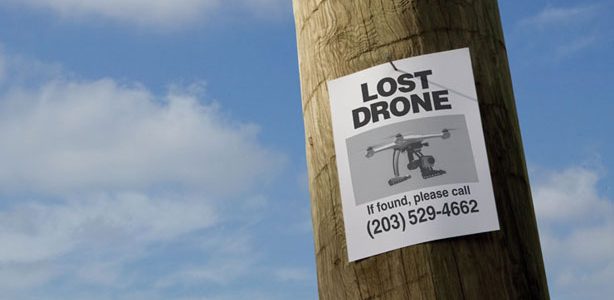
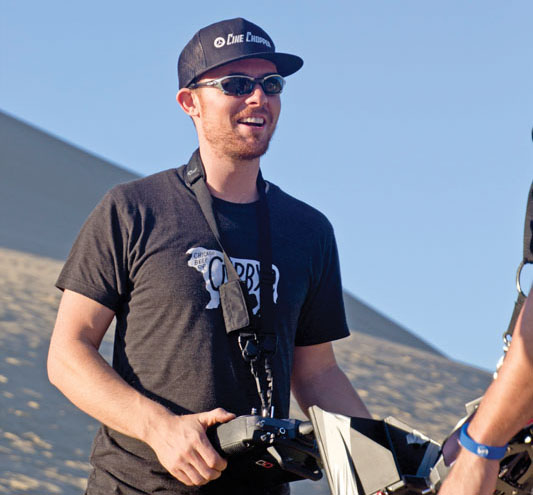
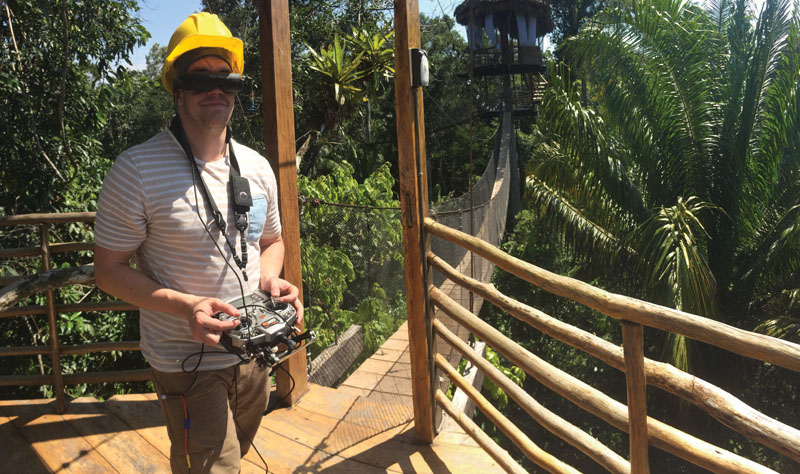
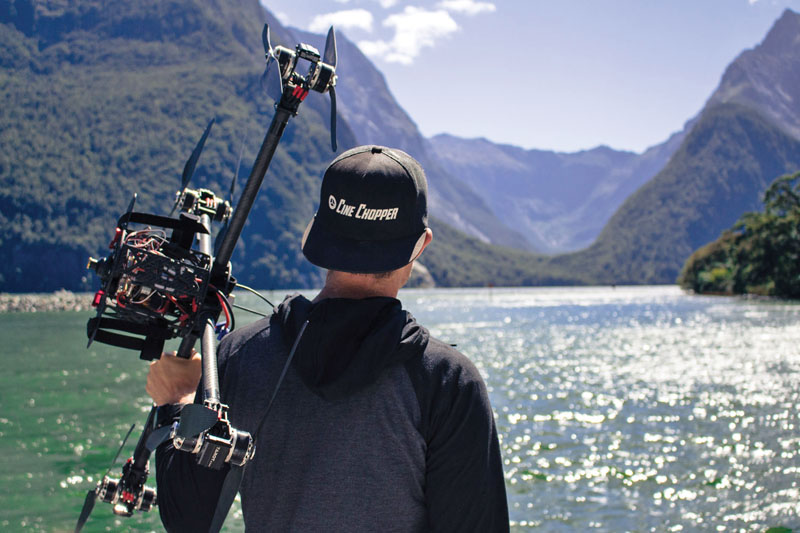
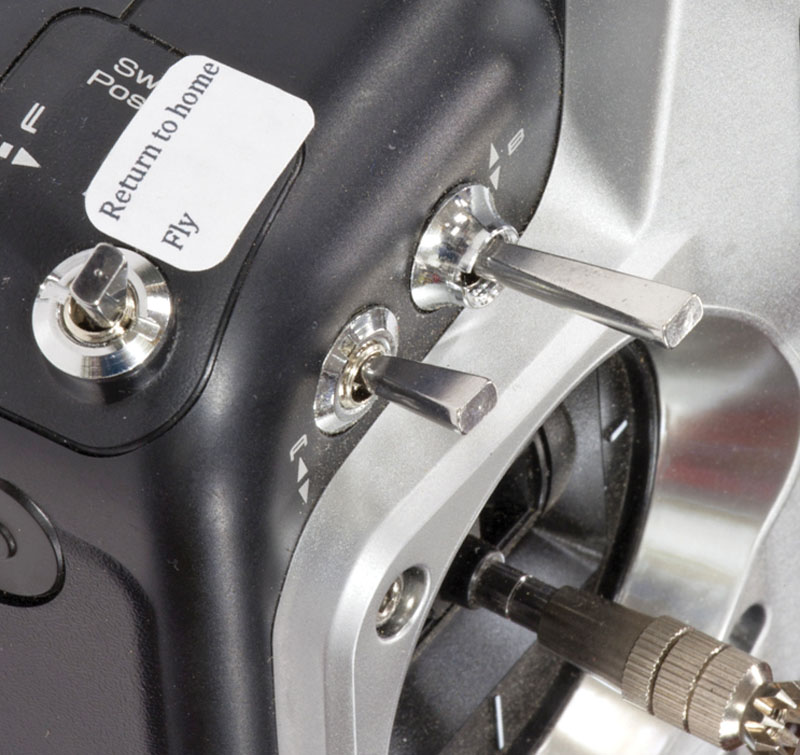

















This is a great start, and I’d encourage you to turn it into a series. Sit down for in-depth interviews with the engineers at major manufacturers and have them talk about what contributes to flyways with their equipment, their software, their GPS receivers, etc. Most importantly, what are the tests, checks, etc. that can be done to ensure the user knows whether the system is compromised and flyaway is more likely.
I’m shocked at how little information is in manuals on technical details and limitation of the navigational systems.
I can just picture Chris Newman running after the drone through the jungle. Good way to get eaten by something or to fall off a cliff, into a river of realise you dint know the way back